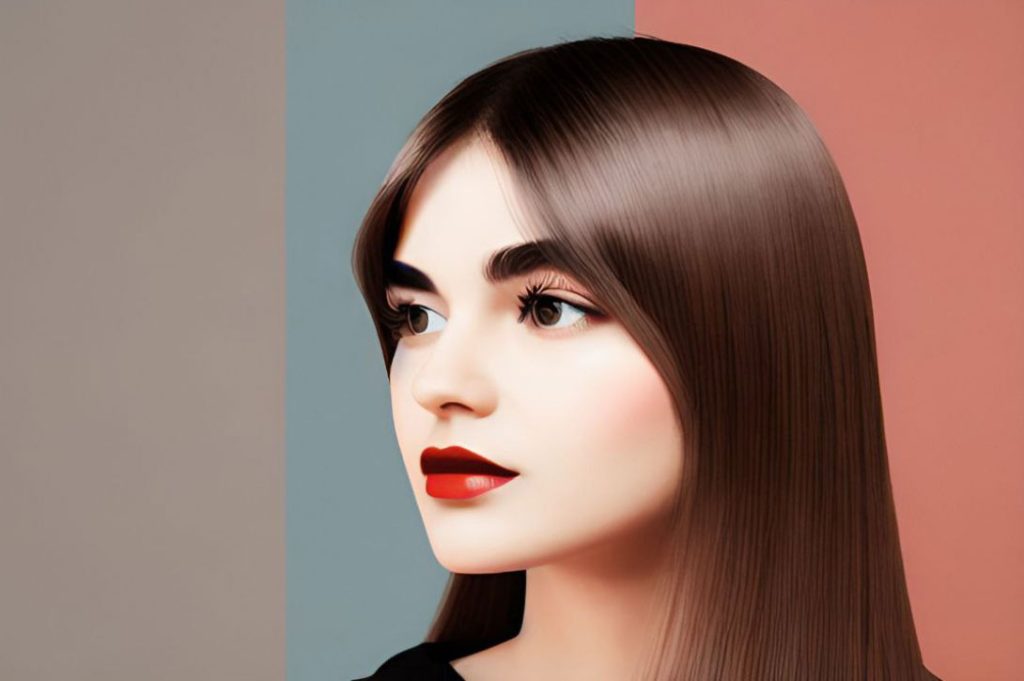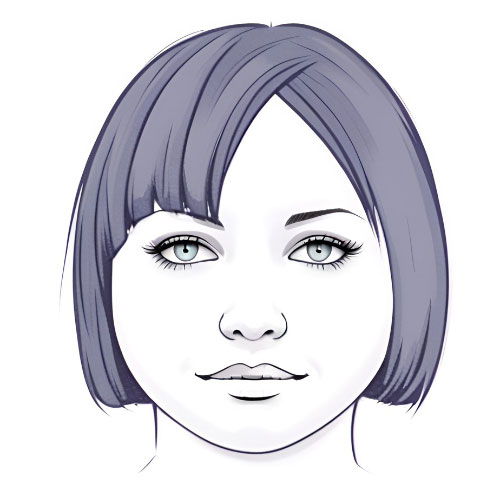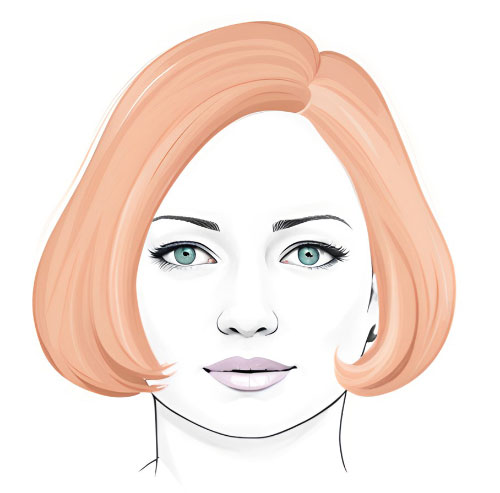Harmonizing Hairstyles with the Lower Third of the Face: An Expert’s Guide
The artistry of hairstyling is not merely about selecting a fashionable cut; it intertwines intricately with the understanding of facial anatomy. The lower third of the face, constituted by the jaw and chin, is a pivotal region that significantly impacts the overall visage. As such, tailoring hair designs to these features is paramount. In this article, we delve deep into the nuances of styling based on different jaw and chin types.

Round Jaw: The Soft Contour
Characterized by its gentle, rounded edges, the round jaw exudes femininity and softness.

- Styling Strategy: Employ straight lines at the jawline. This introduces a counterbalance, offering a geometric contrast to the jaw’s inherent roundness.
- Underlying Logic: Straight lines create an illusion of length and structure, providing a harmonized look that complements the round jaw without exaggerating its shape.
Square Jaw: The Bold Definition
A square jaw, with its strong and defined lines, is emblematic of a sculpted visage.

- Styling Strategy: Incorporate curved lines at the jawline. Curls, waves, or any soft-textured styles can help in softening the prominent angles of a square jaw.
- Underlying Logic: The juxtaposition of curved hairlines against the pronounced angles of a square jaw can meld both features, giving rise to a cohesive appearance.
Long Jaw: The Extended Elegance
A long jaw, while imparting a certain regality, can dominate the lower face if not balanced correctly.

- Styling Strategy: The hair should manifest fullness and preferably cascade below the jaw. This diverts attention and adds width to the face.
- Underlying Logic: Voluminous hair that extends beyond a long jaw breaks its elongated line, drawing attention towards the hair and creating a more proportionate facial appeal.
Receding Chin: The Subtle Retreat
A receding chin, set back from the face, can sometimes appear inconspicuous.

- Styling Strategy: Channel the hair forward in the chin’s vicinity. This might involve softly layered cuts or feathered ends pointing towards the chin.
- Underlying Logic: Forward-directed hair compensates for the receding chin, creating an illusion of forward projection and depth.
Small Chin: Delicate Proportions
A dainty chin adds a touch of refinement to the face.

- Styling Strategy: Propel the hair upwards and away from the face along the chin line. This could mean short, voluminous styles that add height.
- Underlying Logic: By directing the hair’s trajectory upward, the emphasis shifts from the chin’s size, casting focus on the mid-face and eyes.
Large Chin: The Pronounced Feature
A prominent chin, while striking, can overshadow other facial features if not harmonized correctly.

- Styling Strategy: The hair length should be consciously chosen to be either longer or shorter than the chin line. Mid-length styles that end right at the chin should be avoided.
- Underlying Logic: By circumventing lengths that align with a pronounced chin, the attention is dispersed, ensuring the chin doesn’t become the sole focal point.
Conclusion
Mastering the art of hairstyling requires an intimate understanding of every facial nuance. The lower third of the face, rich in its variations, demands this nuanced approach. By tailoring hair designs to each unique jaw and chin type, hairstylists can create looks that not only beautify but resonate deeply with each individual’s anatomy, ensuring a perfect marriage of style and substance.






